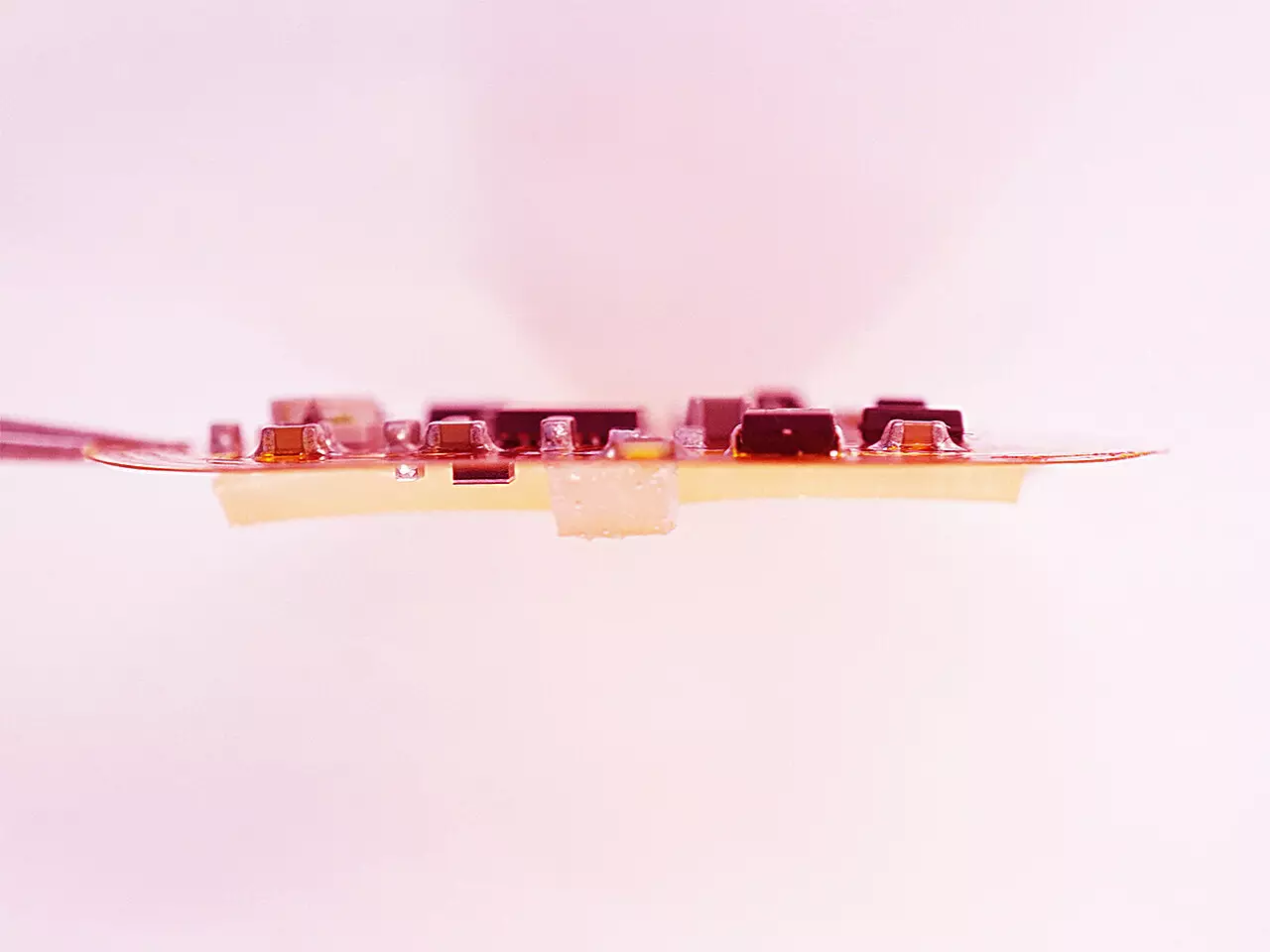Prof. Bozhi Tian’s lab has embarked on a groundbreaking journey to merge the realms of electronics and biology. Their latest innovation, dubbed “living bioelectronics,” combines living cells, gel, and electronics to seamlessly integrate with living tissue. In a study published in Science, the researchers unveiled patches consisting of sensors, bacterial cells, and a gel made from starch and gelatin that have shown promising results in monitoring and improving psoriasis-like symptoms in mice.
Historically, the integration of electronics with the human body has been fraught with challenges. Devices like pacemakers have undoubtedly revolutionized healthcare, but their bulkiness and rigidity often lead to skin irritation and discomfort. Tian’s lab, however, has been at the forefront of understanding how living cells interact with synthetic materials, paving the way for innovations like a light-controlled pacemaker and flexible materials for bone implants.
In their quest to enhance bioelectronic capabilities, Tian’s team introduced a revolutionary approach by incorporating living cells directly into electronic devices. By leveraging the healing properties of bacteria like S. epidermidis, the researchers developed a device with an electronic circuit, an ultrasoft gel layer, and beneficial microbes. These components work synergistically to reduce inflammation and monitor skin signals, resulting in a significant improvement in skin conditions in mouse models.
The application of the ABLE platform extends beyond treating psoriasis-like symptoms. Tian envisions a future where such bioelectronic patches could expedite wound healing in diabetic patients and even interface with neurons or produce insulin. The ability to freeze-dry and rehydrate the devices for storage adds a layer of convenience, making them akin to “living drugs” that require no regular refills.
For Tian, the pursuit of merging biology and electronics dates back to his early days as a postdoctoral researcher. Over the years, his team has made significant strides in understanding cellular interactions and hydrogel properties, culminating in the realization of their vision. This transformative technology not only holds immense promise for healthcare applications but also serves as an inspiration for the next generation of electronic designs.
The successful development of the ABLE platform was made possible through collaboration with research facilities at the University of Chicago and support from the Polsky Center for Entrepreneurship and Innovation. By harnessing the expertise of diverse stakeholders, Tian’s lab aims to commercialize this groundbreaking technology and bring it to the forefront of the bioelectronics industry.
The fusion of living cells with electronics represents a paradigm shift in the field of bioelectronics, opening up a myriad of possibilities for innovative healthcare solutions. Through continuous research and collaboration, the future holds immense potential for transforming how we interact with technology at a biological level. The journey towards integrating living components with electronic devices is not without its challenges, but the rewards of pioneering this frontier are boundless.


Leave a Reply